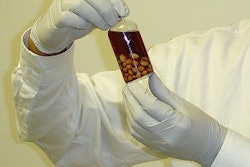To the dismay of Maryland orthopedists, urologists, and emergency surgeons, a trial court in that state has upheld a self-referral law that virtually out-Starks the Stark law by banning nonradiologists from referring for in-office imaging.
Originally passed in 1993 by the Maryland General Assembly, the state's self-referral law was intended to mirror the Stark law, which prevents doctors from referring patients for treatment or tests in which the doctor has financial gain.
But the statute wasn't applied to Maryland orthopedists providing MR and CT scans until 2004, when the state's attorney general issued an opinion that interpreted the law as barring physicians in orthopedic practice from "referring patients for tests on an MRI machine or CT scanner owned by that practice, regardless of whether the services are performed by a radiologist employee or member of the practice or by an independent radiology group."
In December 2006, a group of 14 (nonradiology) medical practices challenged the Maryland Board of Physicians, claiming that the state had misinterpreted the statute. But the group didn't sway the board, which declared that "a referral by an orthopedic practice is an illegal self-referral within the meaning of the Maryland self-referral law.... The exceptions set out in this law do not exempt these MR tests from the general prohibition of the Maryland self-referral law."
Like the Stark law, the Maryland self-referral law has some exceptions, under which nonradiologists have been self-referring for MR and CT scans. These exceptions include the following:
A healthcare practitioner who refers in-office ancillary services or tests that are furnished by the referring practitioner, a practitioner in the same group practice, or someone who is employed and supervised by the referring practitioner or a qualified practitioner within the same group practice; provided in the same building where the referring healthcare practitioner provides service; and billed by the practitioner performing or supervising the service or by that practitioner's group practice.
A healthcare practitioner who refers a patient to another practitioner in the same group practice.
A healthcare practitioner with a beneficial interest in the healthcare entity who refers a patient to this entity for services or tests, which are performed under the direct supervision of this practitioner.
In 2007, a group of orthopedic practices tried again to challenge the ruling, appealing to Chief Judge DeLawrence Beard of the Montgomery County Circuit Court.
In October 2007, Judge Beard entered a judgment in favor of the Maryland Board of Physicians, writing that the law's definition of ancillary services excludes MRI and CT scans for all doctors except radiologists, which therefore makes the other two exceptions moot. He wrote further that allowing doctors to self-refer for services under the group practice and direct supervision exceptions would negate the spirit of the law.
"The issue is that because MR and CT are not considered ancillary services under Maryland law, the ability to apply the other two exceptions is eliminated," according to W. Kenneth Davis Jr. of the law firm Katten Muchin Rosenman. "The court is saying that (nonradiologists) can't provide MR or CT under any of the exceptions to the Maryland self-referral law."
Beard's decision irks nonradiologists who believe that Maryland is overstepping the federal rule and also that the law diminishes patient care by taking helpful clinical procedures that are part of standard practice out of the hands of specialty doctors.
"(Orthopedists) argue that since they need more access to care, why shouldn't they be able to perform these exams in their practices," Davis said.
The self-referral solution
Will other states follow Maryland's example? It's possible, and that sounds like good news for radiologists, who have been caught in the cross-fire of the government's efforts to clamp down on overutilization that results from self-referral and specialists' attempts to continue the practice.
But it's unclear whether self-referral laws like Maryland's really curb overutilization, according to Davis.
"Most states have some kind of analog to the Stark exceptions," he said. "But the efforts at state level to curb overutilization haven't been very successful."
Why? Because rather than addressing the system created by self-referral incentives (referring physicians get income, patients get access to imaging, teleradiology flourishes), self-referral laws address only the surface of the issue, according to Davis.
But Maryland's ruling is the way things are going: After all, the Centers for Medicare and Medicaid Services (CMS) has been actively seeking to address the self-referral problem economically through reimbursement rulings and other approaches for a number of years now.
"There's no question that there are efforts under way, at both the federal and state levels, to narrow the in-office exceptions, whether it's the federal Stark law or state self-referral prohibitions," Davis said.
By Kate Madden Yee
AuntMinnie.com staff writer
January 15, 2008
Related Reading
Cardiologists, orthopods boost imaging use and adoption rates, studies find, November 26, 2007
CMS to delay portion of Stark III, November 20, 2007
Same-specialty referring physicians use imaging more frequently, study says, November 8, 2007
CMS delays in-office self-referral decision with new MPFS rule, November 7, 2007
Maryland court backs state's self-referral law, October 26, 2007
Copyright © 2008 AuntMinnie.com




















